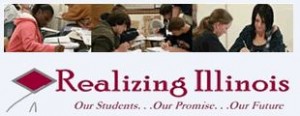
Traditionally, how does society treat each gender differently? Are they both treated as equals?
“ Those who don’t fit the mold often feel alienated,” said Merry Higgin, one of the five teachers who are teaching the gender unit in the English III classes. “Here at Huntley High School, the majority of the students who were involved in a discussion agreed that the social rules are very different for each gender.”
This question is one of four of the essential questions that the whole third quarter curriculum is based on. The third quarter gender unit is part of the new curriculum that the English III classes have implemented this year. The new curriculum is a result of the New Illinois State Learning Standards Incorporating the Common Core (NISLSICC) program. This program focuses on teaching skills that better prepare students for success in college and in a competitive global economy.
“[NISLSICC program] allows us to incorporate a lot more nonfiction, which is lacking in our curriculum right now,” said Erica Holton, AP Language and English III teacher.
The gender unit was decided upon by the English III teachers because it is a unit taught in AP Lanaguage.
“It’s always very interesting because students have a lot to say about it,” said Holton. “It tends to have more meaning for students and it relates to real life.”
By getting students interested in the subject, it helps for students to obtain those skills that NISLSICC focuses on.
Throughout the gender unit, students will be exposed to many different formats of information including essays, poems, short stories, and videos. They will read an essay called “Being a Man” by Paul Theroux, a poem called “Barbie Doll” by Marge Piercy, and short story called “The Yellow Wallpaper” by Charlotte Perkins-Gilman. These are just some of the many forms of nonfiction that are being incorporated into the curriculum.
The students just recently watched a video called “Raising Cain”, which is about American boys and how they are raised. It exposes the students to stereotypes between boys and girls and how boys are raised differently in different countries.
At the end of the unit the students will write a problem/solution essay on what they think is the biggest issue with gender. The essay and the unit give the students the opportunity to form an opinion about gender.

